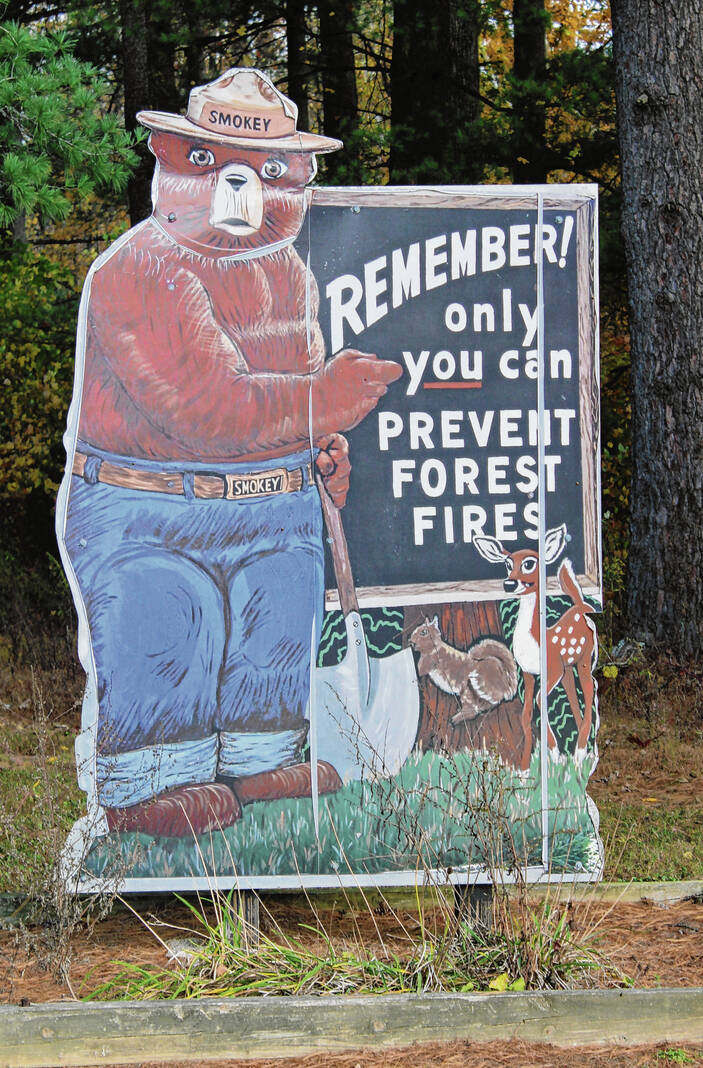
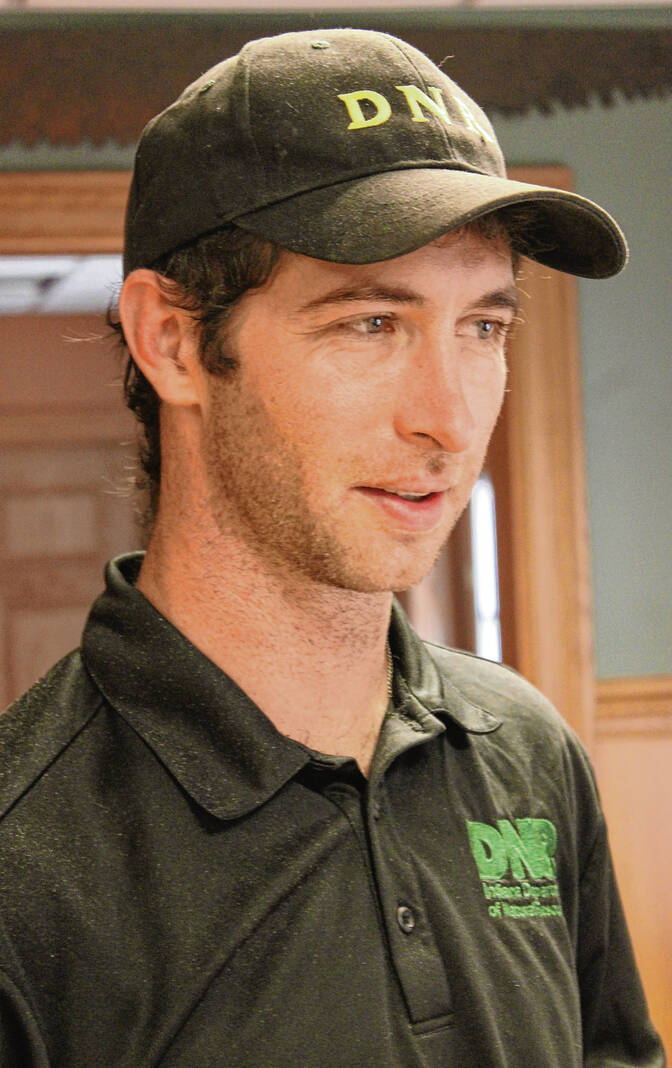
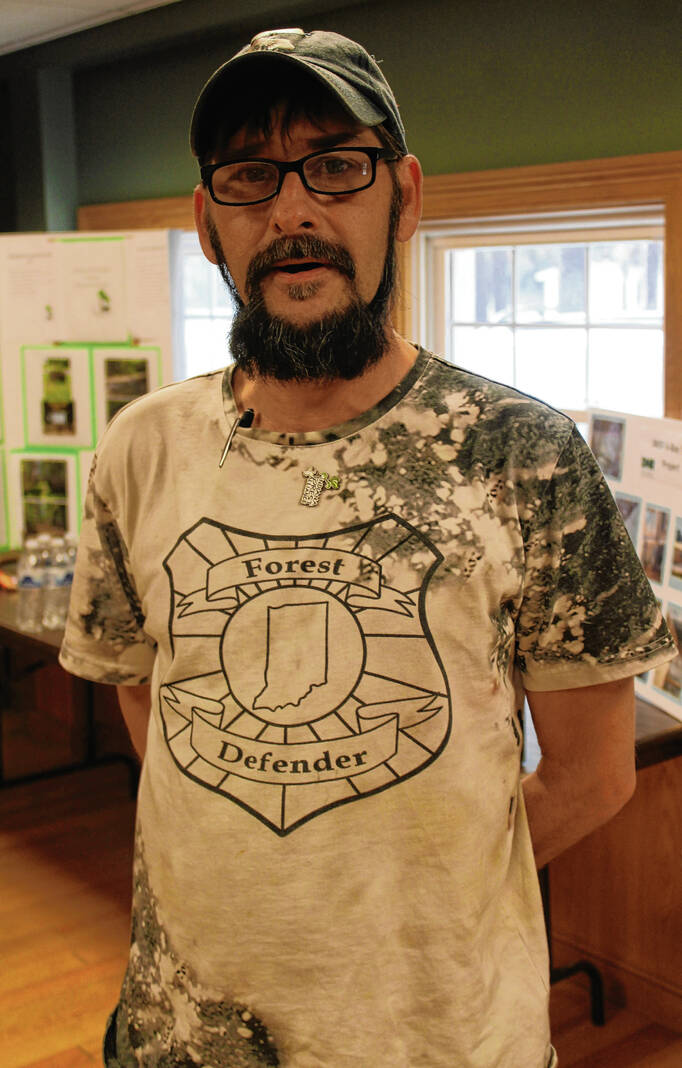
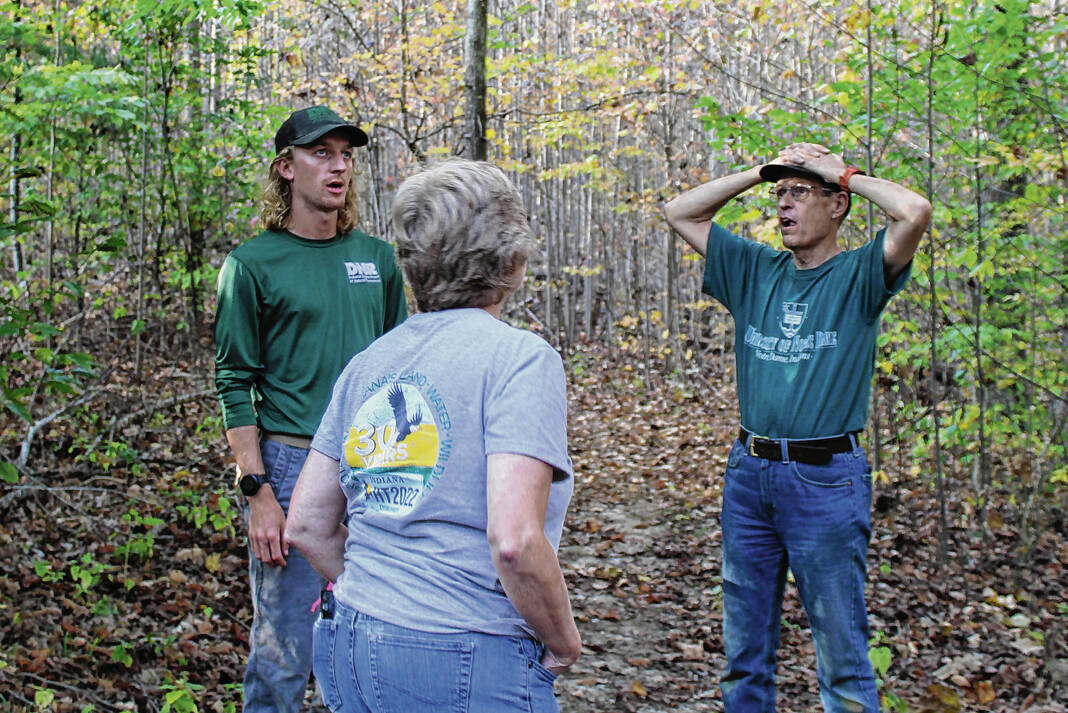
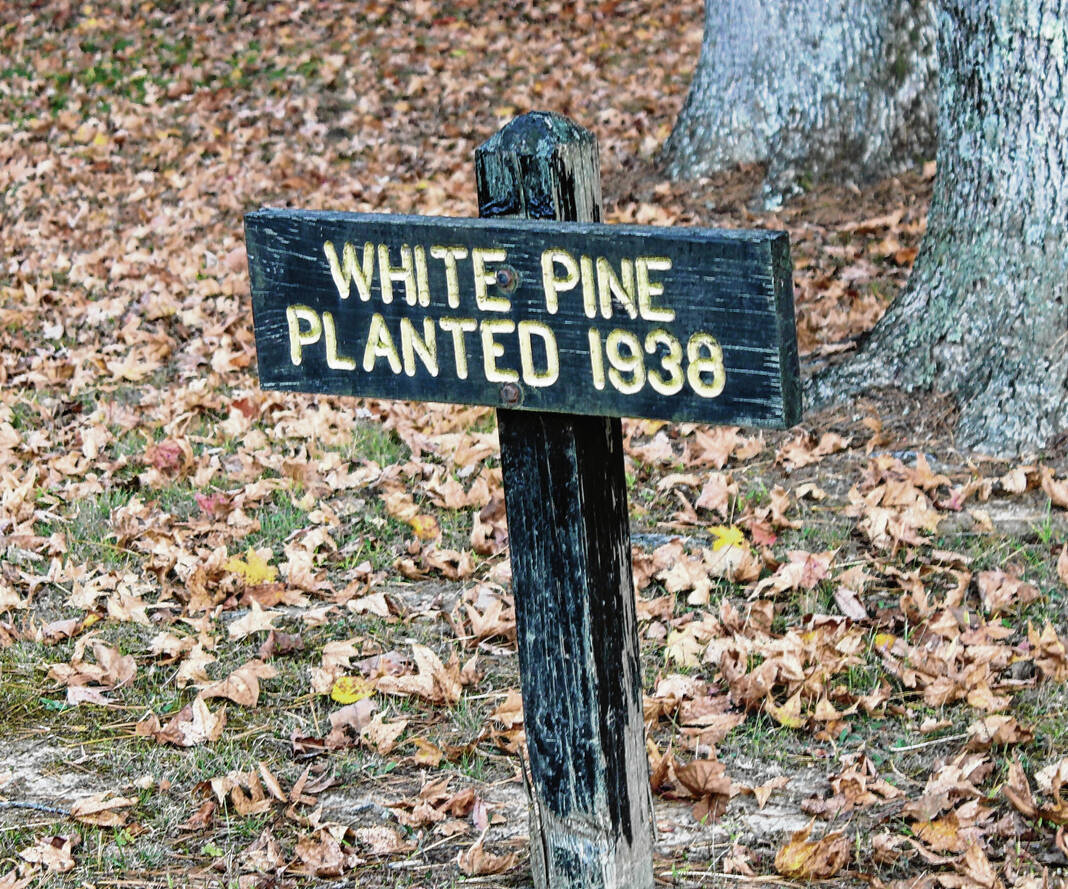
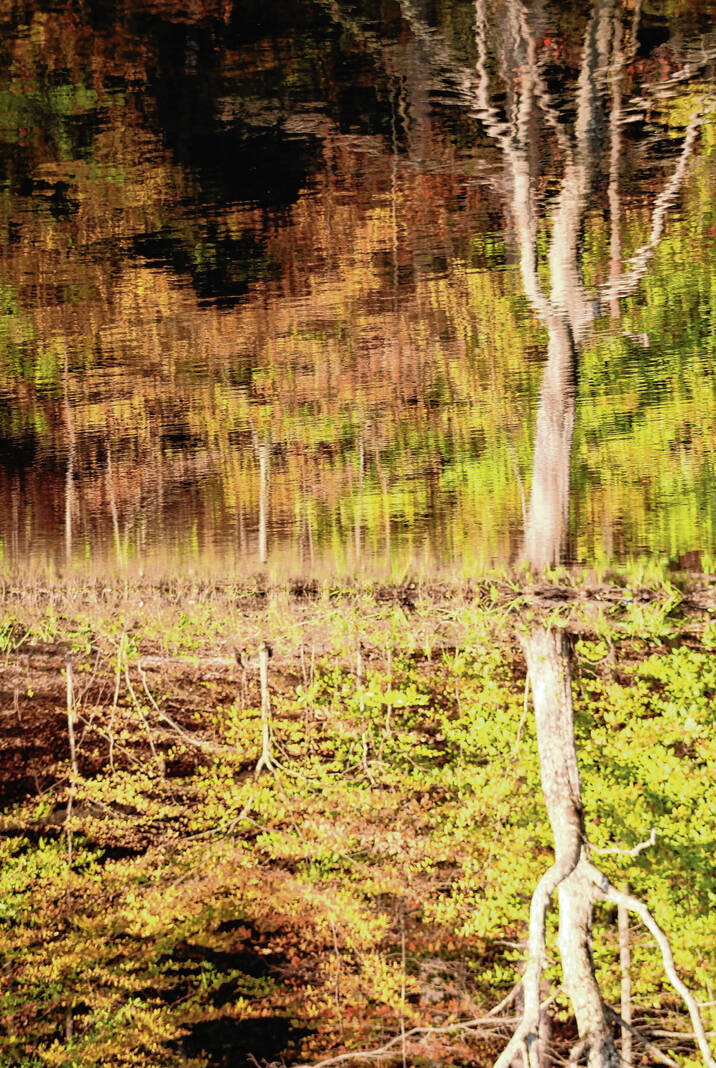
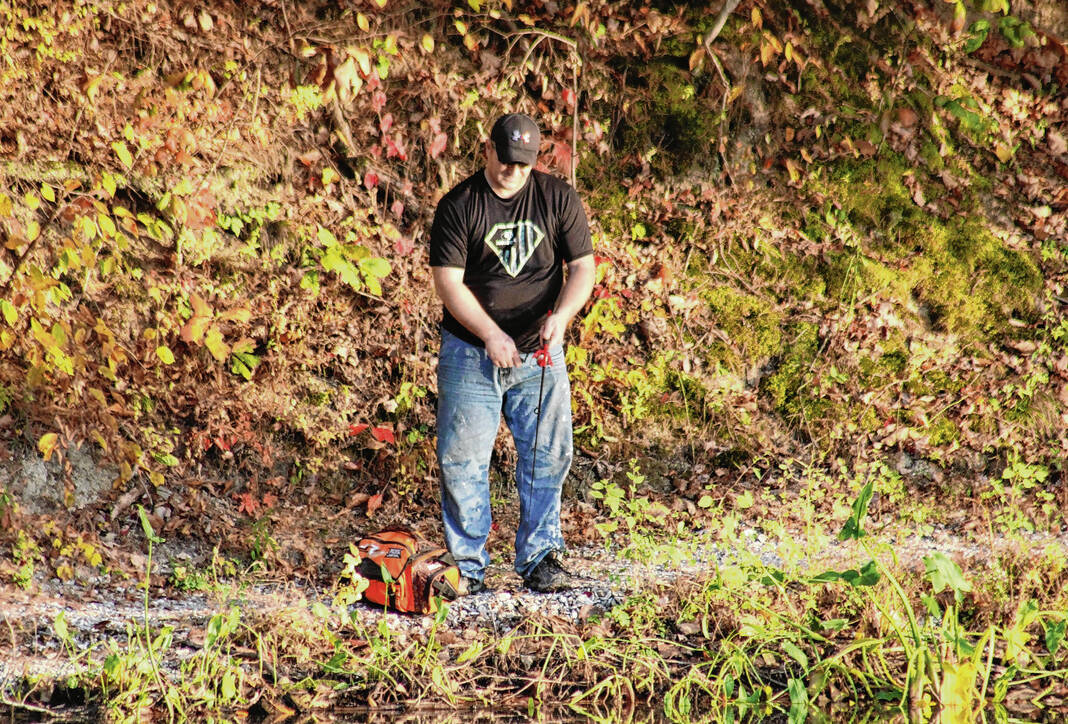
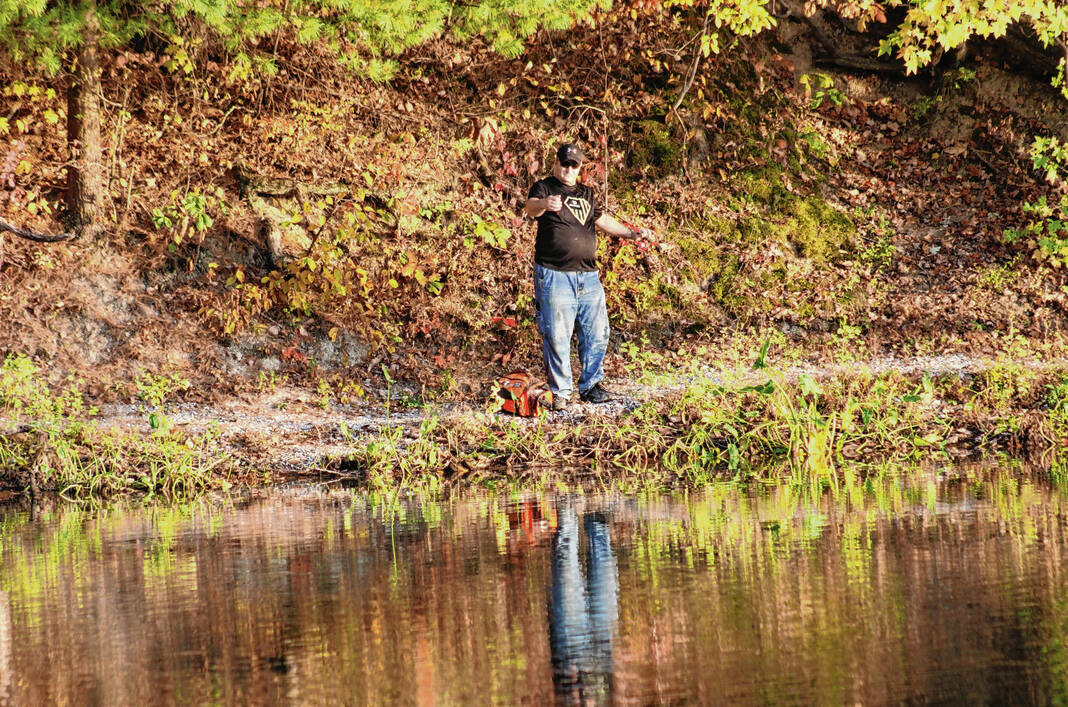
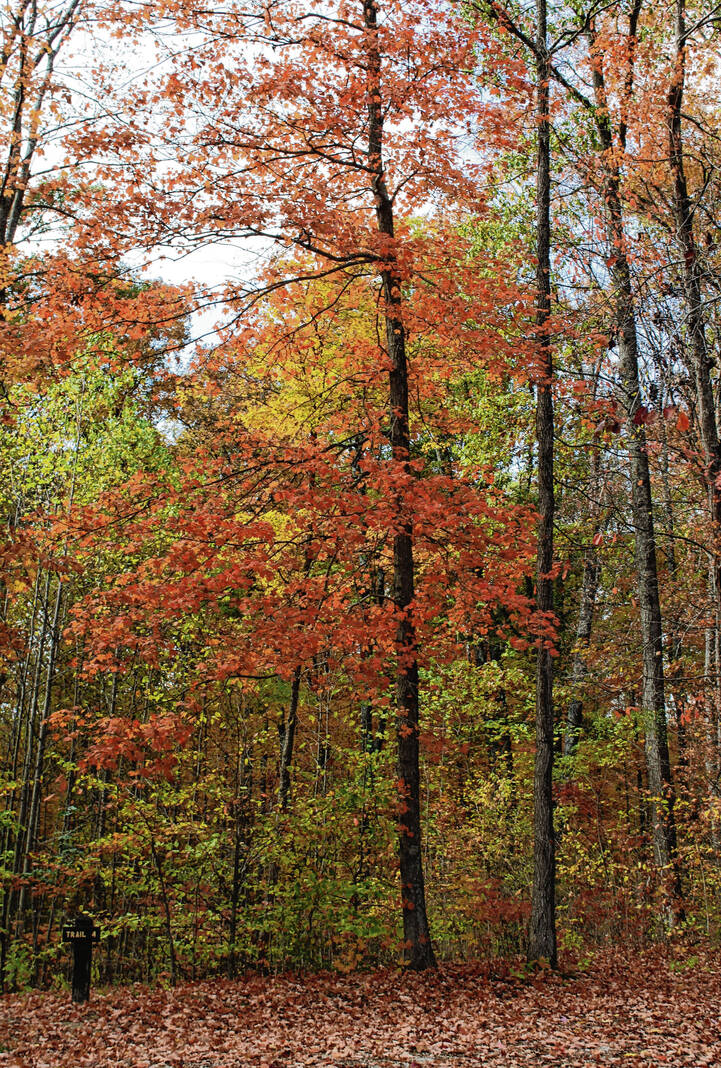
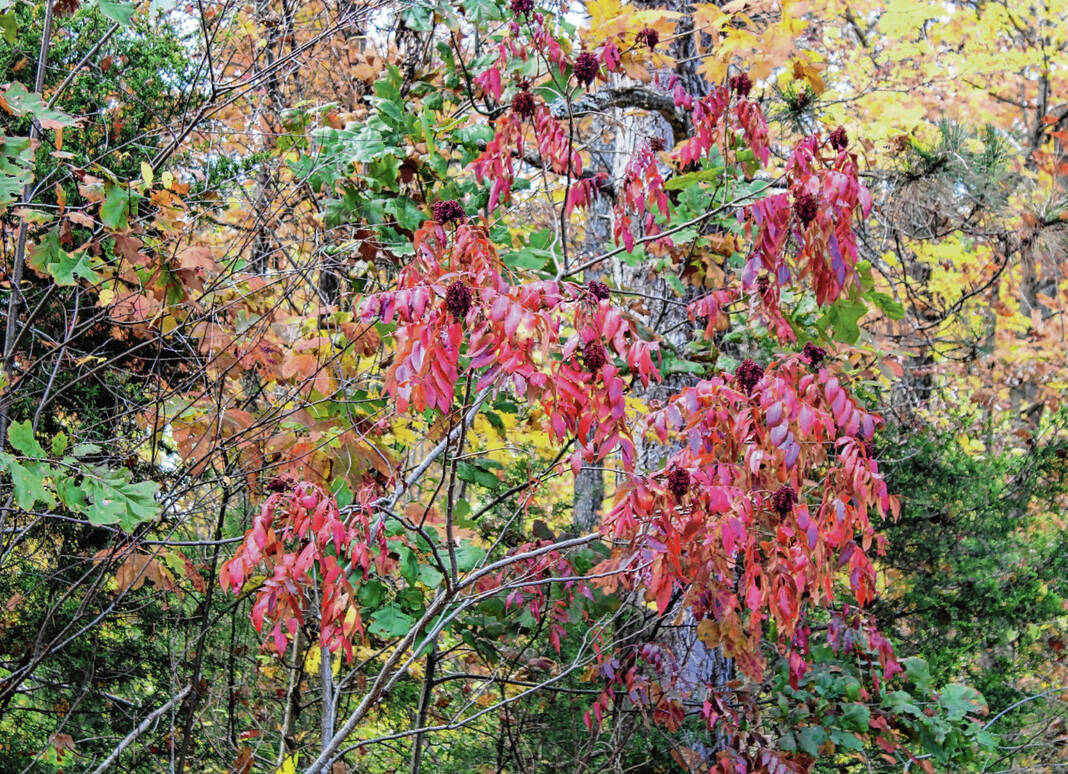
BROWNSTOWN — A lone fisherman gave wrist-flick casts into Knob Lake, standing on shore against a backdrop of big-league trees whose leaves were changing color while bass and bluegill eluded him.
Nearby, a couple sat on a bench watching the gradually dimming sun.
Up a hill, a few vehicles were parked in week-day camping spaces. In another direction a handful of hikers strode on a trail.
In every direction inside Jackson-Washington State Forest’s 18,000 acres, a riot of color announced the changing of the seasons from summer to autumn, leaves shifting from green to yellow, orange and red. All of it proclaimed serenity with nature.
On this day, the state Department of Natural Resources’ forestry division was hosting an open house to show off the outdoor opportunities on the property. But it was only a mini-viewing, since on any other given day, a virtual decathlon of outdoor activity could take place.
There was likely to be canoeing, hunting, horseback riding, picnicking, runners working out on the roads and trails, kids cavorting on a playground, and even more fishing, also on Cypress Pond and other bodies of water. And don’t forget the archery range. Or Skyline Drive, where people can drive along to appreciate the fall foliage.
Over a few-day period in late October, DNR hosted such open houses around the state, essentially as a showcase and reminder to Hoosiers.
“It’s just there are a lot of people who don’t know about places like this,” said Josh Kush, the Jackson-Washington property manager. “I think if a lot of people knew more about these areas, they would realize what they had.”
Basically, the forests are people’s parks, Indiana citizen-owned, preserving nature and the outdoors for use. There is not even an admission fee at Jackson-Washington demanded to tour around.
Trails are well-marked and hikes near headquarters may be a mile-or-so, or even 50 miles. Although there is no precise way to measure user numbers, Kush said many people who live nearby in Jackson County give themselves a break from their schedule at the end of the day.
“There is a lot of activity after work,” Kush said.
Brad Schneck, a Seymour High graduate who is now assistant director of the state forestry property section, was pretty much on tour during the open-house stretch, dropping in at different forest areas. The forestry system encompasses 160,000 acres in Indiana, he said, including “recreation in all forms.”
Five people turned out for the Jackson-Washington open house, but as many as 50 elsewhere, with a wide range in-between. Kush set out cheese and crackers, bite-sized Halloween candy, and soft drinks for his customers.
Pictures, maps and descriptions of what Jackson-Washington has accomplished on its projects in terms of rehabbing and improving older facilities over the last year were on display. One thing that may surprise visitors is that many areas have development that dates to the 1930s with work done by the Depression-era Civilian Conservation Corps.
A visitor will see small notifications at various places with letters of credit “CCC” carved on brown wood signs. A large sign, familiar to youngsters and those of a certain age, greets arrivals to the forest off Route 250. It features Smokey the Bear, that icon of firefighting prevention. Actually, friendly Smokey is due for refurbishment, Kush said.
Julie Kieffer of Brownstown is a regular hiker at Jackson-Washington and did have her hiking shoes on for the open house. Kieffer said she has spent a lifetime in this forest, going back to days when she attended a girl scout camp there.
She said more of her neighbors in Jackson County should take advantage of the forest’s offerings.
“They just don’t utilize it,” Kieffer said.
It was sunny, the temperature in the 70s, and the leaves were bursting out all over like a spilled crayon box.
“Oh, this is perfect,” Kieffer said.
Kathy Medren was somewhat of a flip-side visitor to Kieffer’s regularity. She works for the DNR at Atterbury, but wasn’t working on this day. She wanted to check out a new forest during the open house days.
“I’ve never been to this forest,” Medren said.
One might say Steven Stewart of Ellettsville, wears his allegiance to trees on his sleeve. Or actually, since he was dressed in a T-shirt with the words “Forest Defender” on the front, his chest.
Stewart was a first-time drop-in at Jackson-Washington, as well. On a group hike, it was apparent he knew his trees, readily identifying species soaring upward and also plants that he called out as invasive. No one contradicted his statements, so he seemed to know what he was talking about.
A member of an organization called the Indiana Forest Alliance, he said the group has been lobbying Congress for passage of legislation that would expand and further protect Indiana’s Charles C. Dream Wilderness Area, affecting land in Seymour, Indianapolis, Columbus, Bloomington and Bedford.
“I just love being in the woods,” said Stewart, 50, who said even as a baby he was carried into the backcountry by family members. “You can just get out in the woods and be with nature.”
Jackson-Washington forester Bailey McIntire gave visitors a taste of that nature on a roughly mile-long hike through the forest near headquarters. He identified numerous kinds of trees, but what was inescapable once the handful of hikers embarked on a trail, taking only a few steps, was how far removed was all evidence of traffic, businesses, or any other sign of modern hubbub.
“There’s always something to do in the state forest system,” Schneck said.
The idea of behind the open house, the idea conveyed by Schneck, Kush and McIntire, is for those who came to Jackson-Washington State Forest and absorbed the nature, to go home and tell their friends and family that very thing.
